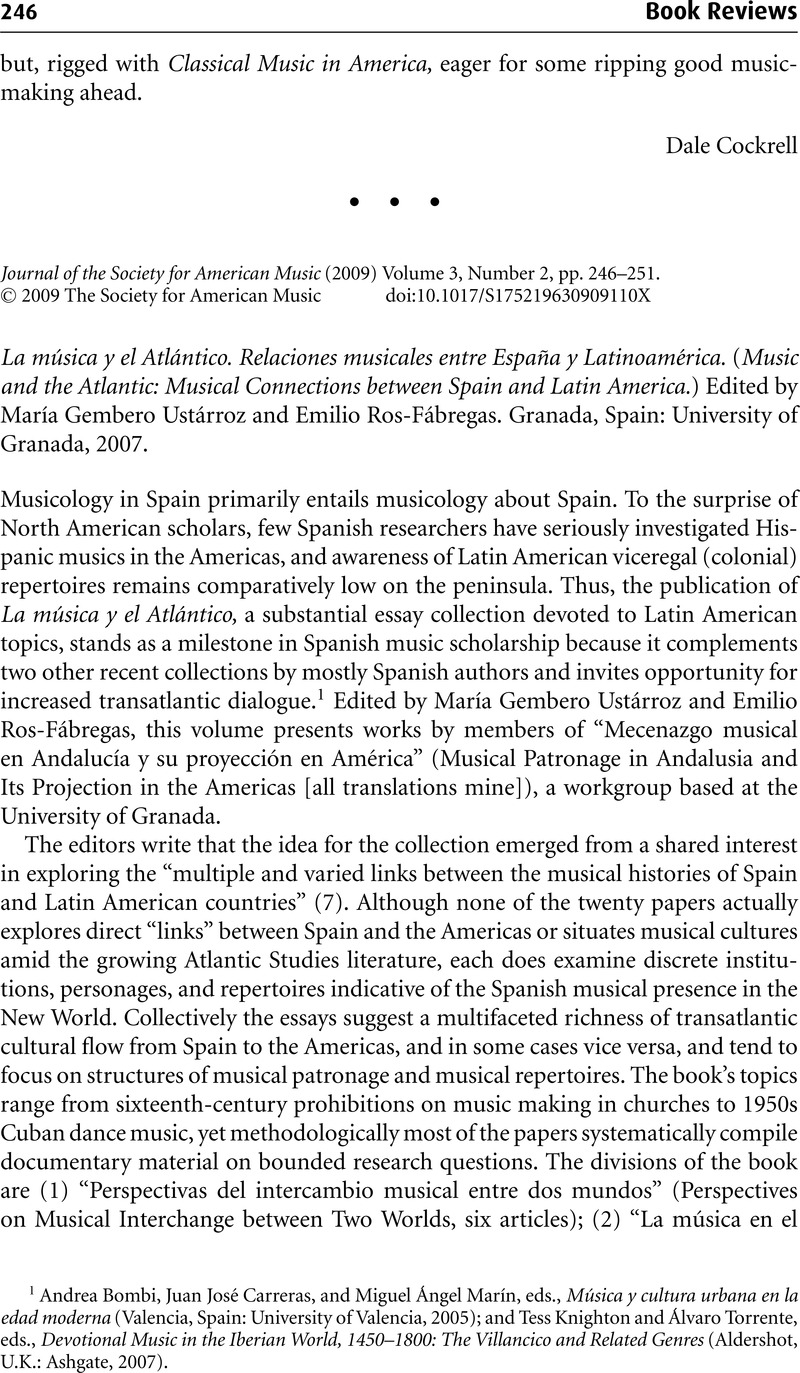Published online by Cambridge University Press: 01 May 2009

1 Bombi, Andrea, Carreras, Juan José, and Marín, Miguel Ángel, eds., Música y cultura urbana en la edad moderna (Valencia, Spain: University of Valencia, 2005)Google Scholar; and Knighton, Tess and Torrente, Álvaro, eds., Devotional Music in the Iberian World, 1450–1800: The Villancico and Related Genres (Aldershot, U.K.: Ashgate, 2007)Google Scholar.
2 The manuscripts in the Estrada Collection do not appear in the following publications: Spiess, Lincoln and Stanford, E. Thomas, An Introduction to Certain Mexican Musical Archives (Detroit: Information Coordinators, 1969)Google Scholar; Stevenson, Robert, Renaissance and Baroque Musical Sources in the Americas (Washington, D.C.: Organization of American States, 1970)Google Scholar; and Stanford, E. Thomas, Catálogo de los acervos musicales de las catedrales metropolitanas de México y Puebla de la Biblioteca Nacional de Antropología e Historia y otras colecciones menores (Mexico City: Instituto Nacional de Antropología e Historia, 2002)Google Scholar. They will appear, with musical incipits, in the comprehensive cataloging project in progress by members of the Seminario Nacional de Música en la Nueva España y el México Independiente (MUSICAT).
3 Segaut, Nelly, “El concepto de tradición en el análisis de la pintura novohispana: la sacristía de la catedral de México y los conceptos sin ruido,” in Tradición, estilo o escuela en la pintura iberoamericana, ed. Sáiz, María Concepción García and Haces, Juana Gutiérrez (Mexico City: Universidad Nacional Autónoma de México-Instituto de Investigaciones Estéticas, 2004), 207–53Google Scholar; and Davies, Drew Edward, “El triunfo de la iglesia: villancicos dieciochescos para san Pedro,” in Lo sonoro en el ritual catedralicio: Iberoamérica, siglos XVI–XIX, ed. Cayeros, Patricia Díaz (Guadalajara: Universidad Nacional Autónoma de México and Universidad de Guadalajara, 2007), 87–104Google Scholar.
4 Ignacio Jerusalem, Matins for the Virgin of Guadalupe, recorded by Chanticleer (Teldec 21829, 1997).
5 Drew Edward Davies, “The Italianized Frontier: Music at Durango Catedral, Español Culture, and the Aesthetics of Devotion in Eighteenth-Century New Spain” (Ph.D. diss., University of Chicago, 2006), 503. Isugi does not cite the source of her reference to the one work by Rabassa, Pasitico airecillos, she lists from Durango. The date of that manuscript is 1731.